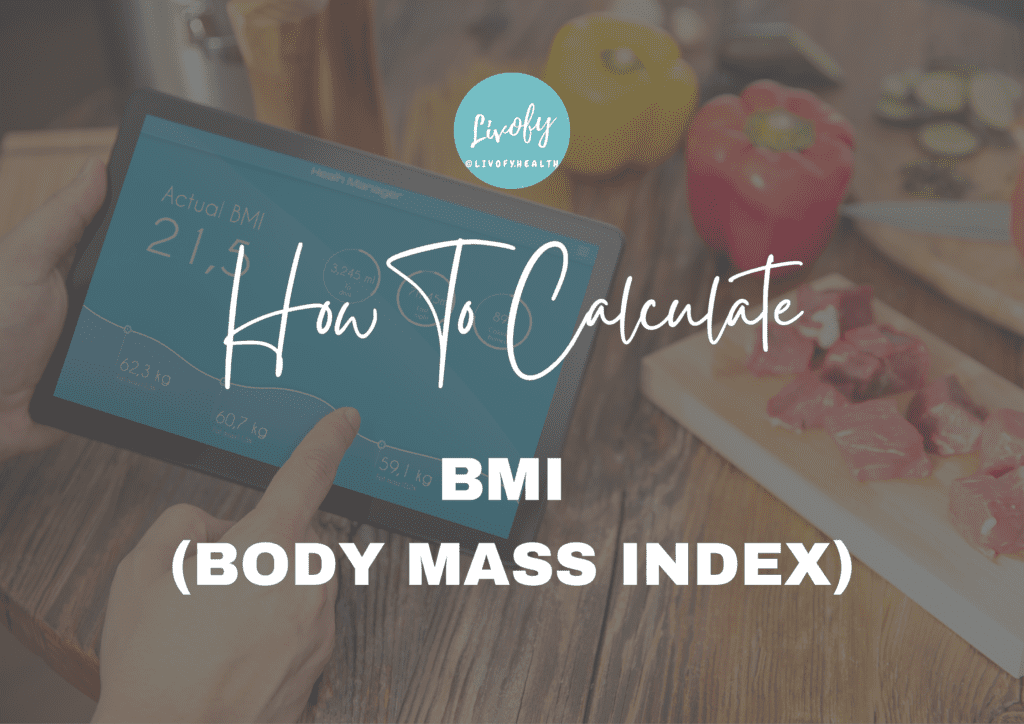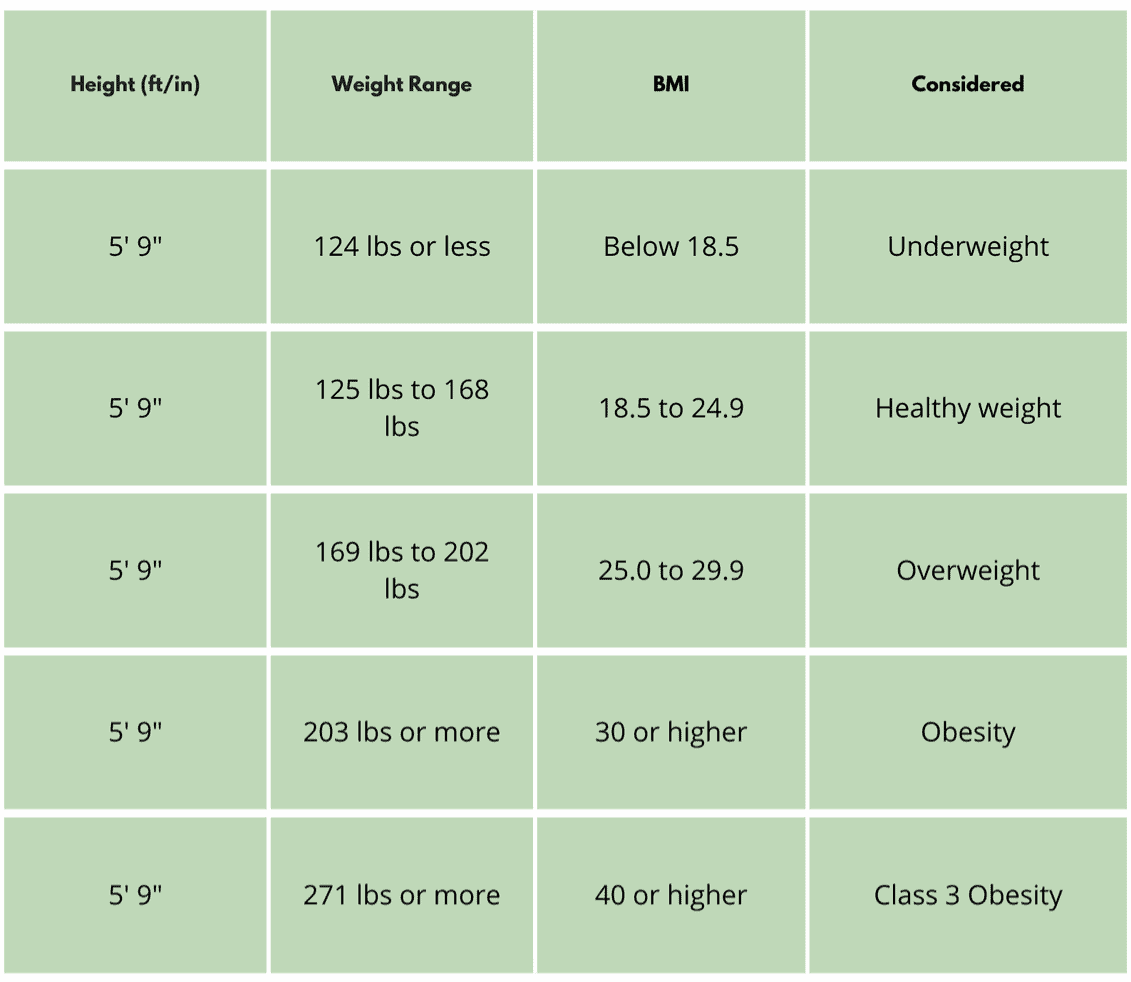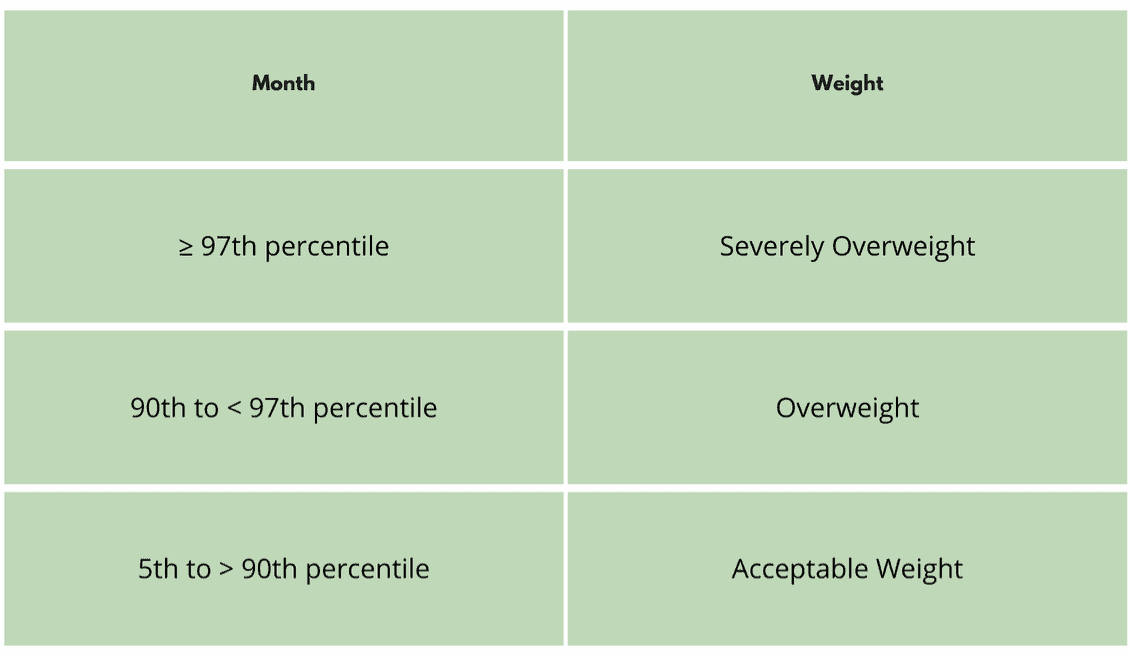Using your height and weight measurements, healthcare professionals can use the body mass index (BMI) tool to determine how much body fat you have. It can aid in determining risk factors for particular medical diseases. Body fatness is not always accurately represented by BMI. If you have questions like how to calculate body mass index, and how to calculate BMI, then you’re just at the right place! Let’s look at BMI (Body Mass Index) closely.
What is BMI – Body Mass Index?
A person’s BMI or body mass index is a screening metric that can show if they are underweight, have a healthy weight, are overweight, or are obese. A person’s health risks may drastically rise if their BMI is outside of the healthy range.
Numerous health concerns, including type 2 diabetes, high blood pressure, and cardiovascular issues, can be brought on by carrying too much weight.
A too-low weight can raise the risk of anemia, osteoporosis, and starvation. The physician will provide appropriate advice.
However, it makes use of common weight status categories like height weight chart that can assist medical professionals in monitoring weight status across populations and spotting possible problems in specific patients. Keep on reading to know more about BMI (body mass index) and how to calculate BMI.
Looking for some Weight loss Delicious Recipes? You’ve arrived at the right place!
What is BMI used for?
BMI or body mass index is used by medical professionals as a screening tool for several diseases as well as to help diagnose different weight categories.
Identifying weight categories using BMI:
The following BMI ranges (in kg/m2) often categorize various weight types:
- Class I obesity is defined as being between the weights of 30 and 34.9
- Class II obesity is being between the weights of 35 and 39.9
- Class III obesity is being over the weight of 40.
Not all healthcare professionals define different weight kinds using BMI.
Check out our Weight loss blogs for detailed info on this.
Other tools consist of:
- Measuring the waist’s size.
- Using skinfold calipers to gauge the thickness of the skin in specific places on your body, such as the backs of your upper arms and between your shoulder blades.
- Less often used tests include the DEXA scan and air displacement plethysmography (ADP).
- Height Weight Chart
How To Calculate BMI?
Looking at how to calculate body mass index (how to calculate BMI) by using the following these steps:
- Add 703 to your weight in pounds.
- The result is divided by your height in inches (there are 12 inches in 1 foot).
- Once more, multiply that result by your height in inches.
- Look at the general height weight chart.
What is BMI (Body Mass Index Formula)?
For instance, someone who weighs 180 lbs. and is 65 inches tall (5 feet and 5 inches total) would determine their BMI in the manner shown below:
Body Mass Index Formula:
- 180 x 703 = 126,540
- 126,540 / 65 = 1,946.769
- 1,946.769 / 65 = 29.95.
Their BMI is 29.9, so.
BMI Chart – Height Weight Chart
BMI Chart/Range For Adults
There’s a very simple way how to calculate BMI(how to calculate body mass index), which is by dividing a person’s height in meters squared by their weight in kilograms. High body fatness may be indicated by a high BMI. Now that your calculation for BMI is here, let’s look at categorizing the same.
See the Adult BMI Calculator or use this BMI Index Chart to establish your height and weight to know how to calculate BMI (how to calculate body mass index).
- If your BMI is less than 18.5, it falls within the underweight range.
- If your BMI is 18.5 to <25, it falls within the healthy weight range.
- If your BMI is 25.0 to <30, it falls within the overweight range.
- If your BMI is 30.0 or higher, it falls within the obesity range.
Adult Body Mass Index (BMI CHART)
Although BMI Or the above BMI chart does not directly measure body fat, it is modestly correlated with more precise measurements of body fat obtained from other techniques, such as dual-energy x-ray absorptiometry (DXA), underwater weighing, bioelectrical impedance, and measurements of skinfold thickness 1, 2, and 3. Furthermore, consistent with these more precise measurements of body fatness, BMI appears to be highly linked with a number of unfavorable health outcomes 4,5,6,7,8,9.
BMI Chart/Range for Children and Teens, aged 2-20
The calculation for BMI (body mass index formula) in order to rule out the potential weight and health-related concerns in kids and teenagers. A healthcare professional may conduct additional examinations such as skinfold thickness measurements, reviews of family history, eating behaviors, and physical activity if kids or teenagers have a high BMI for their age and sex. Beginning at age 2, the American Academy of Pediatrics advises using BMI to check for overweight and obesity in children. Consult the World Health Organization (WHO) guidelines for children under the age of two.
A healthcare professional may check a child or teen’s BMI for age more frequently than once a year. Monitoring a child’s or teen’s growth over time can help ensure that they are obtaining or maintaining a healthy weight. Because children’s and teens’ height and weight will alter as they develop, a single BMI-for-age estimate is insufficient to assess long-term weight status.
Understanding your BMI Result – Diagnosing weight types with BMI
The calculation for BMI or body mass index is the first step, but diagnosing the type is the next part. You may have an increased chance of getting the following illnesses if your BMI is under 18.5 (underweight):
- Malnutrition
- Anemia
- The weakened immune system may make infections and diseases more common
- Osteoporosis
- Infertility
Your doctor may recommend certain blood tests and other diagnostic procedures if you are underweight in order to assess your general health and determine whether you are malnourished.
Generally speaking, the following conditions are more likely to affect you if your BMI is higher:
- Heart Illness
- Elevated blood pressure (hypertension)
- Diabetes type 2
- Gallstones
- Osteoarthritis
- Apneic sleep
- Some malignancies, including gallbladder, breast, colon, and endometrial
- Depression and other ailments of the mind
Keep in mind that you could have any of the aforementioned health issues without having a high BMI. The same is true for having a high BMI without any of these disorders. The development of these disorders is greatly influenced by both genetics and other elements, such as cigarette smoking. You can research for some good Keto Diet Plans in order to combat this.
Your doctor will likely request specific blood tests, such as a comprehensive metabolic panel and lipid panel, to evaluate your general health if your BMI indicates that you may be obese.
Underweight
You are below the standard defined in the chart. You must seek professional medical help to find the reason and remedy for it.
As per the BMI formula: 124 lbs or less | Below 18.5
Healthy Weight
It means that you are within the defined ratio range.
As per the BMI formula: 125 lbs to 168 lbs | 18.5 to 24.9
Overweight
Your weight is a little above the standard for your height.
As per the BMI formula: 169 lbs to 202 lbs | 25.0 to 29.9
Losing weight is always the right answer. If you’re looking for some Weightloss Diet Plans, Livofy might be the right platform for you!
Obese
Your weight is severely above the standard for your height. It denotes that you are at risk of several diseases and have to adopt remedial measures for weight loss.
As per the BMI formula: 203 lbs or more | 30 or higher
Limitations of the BMI
Body mass index, or BMI, is a helpful measure for figuring out what a healthy weight should be, but experts have expressed doubt about its accuracy.
BMI ranges by themselves cannot reveal whether a person is at a healthy weight, but when combined with other indicators, it can offer a more complete picture.
Age And Sex
Age or sex is not taken into account when calculating BMI for adults 20 years of age and older.
With the same BMI ranges, women often have more body fat than men. Similarly, a younger person with an identical BMI tends to have less body fat than an older person.
Due to these factors, BMI ranges or the BMI formula might not provide enough information to assess a person’s weight in order to decide whether it is healthy.
Body Composition
The amount and distribution of body fat cannot be determined by BMI, and these factors can have an impact on health. For instance, research suggests that individuals with fat around the waist and the abdominal organs may be more susceptible to health issues than individuals with fat in other places.
BMI And Health
If a person has a high BMI, especially if it puts them in the obese category, they are likely to have a high percentage of body fat.
However, it is possible to have healthy quantities of fat and still be considered “overweight” by the BMI.
Because muscle weighs more than fat, measurements of height and weight alone may not adequately reflect health in highly muscular persons like sportsmen and bodybuilders.
A BMI in the extremely high range is possible in a healthy, muscular person. While having a low BMI, a fragile, inactive individual may have more body fat and less lean tissue than is healthy. In any which way, if you find yourself on the higher side of BMI, reach out to someone who can provide you with Expert Diet Treatment.
FAQS
Why is BMI used to measure overweight and obesity?
Both adults and children can reasonably estimate their body fat using their BMI. The BMI should not be utilized as a diagnostic tool because it does not directly assess body fat. BMI ranges should be used as a screening tool to detect potential weight issues in people as well as a metric to assess weight status in communities.
Are there any other ways to assess excess body fat besides BMI?
Skinfold thickness measurements using calipers, underwater weighing, bioelectrical impedance, dual-energy x-ray absorptiometry (DXA), and isotope dilution are further techniques for determining body fatness.
Is BMI interpreted the same way for children and teens as it is for adults?
If you’re looking to learn about how to calculate BMI (how to calculate body mass index), know that despite being calculated using the same formula as adult BMI, BMI is interpreted differently for kids and teenagers. The BMI of children and teenagers must be gender- and age-specific because body fat percentage changes with age and varies between boys and girls.
Who shouldn’t use a BMI calculator?
Bodybuilders, long-distance runners, expectant mothers, the elderly, and small children are not included in the BMI calculations (calculation for bmi). This is so because BMI only considers the number and ignores whether the weight is made up of fat or muscle.
What is a Normal BMI?
Your BMI falls within the normal or healthy weight range if it is between 18.5 and 24.9. Your BMI is considered overweight if it is between 25.0 and 29.9.














